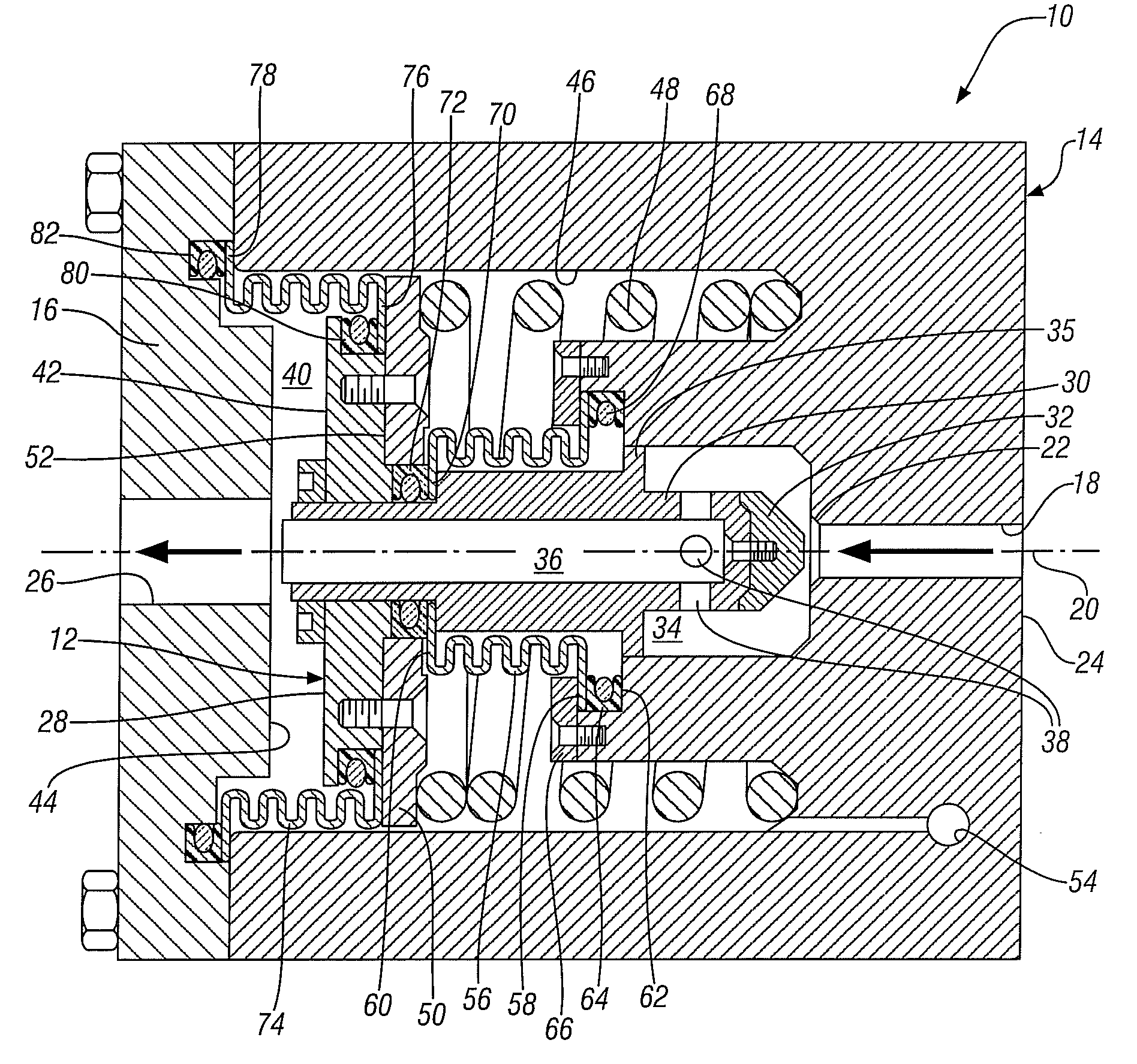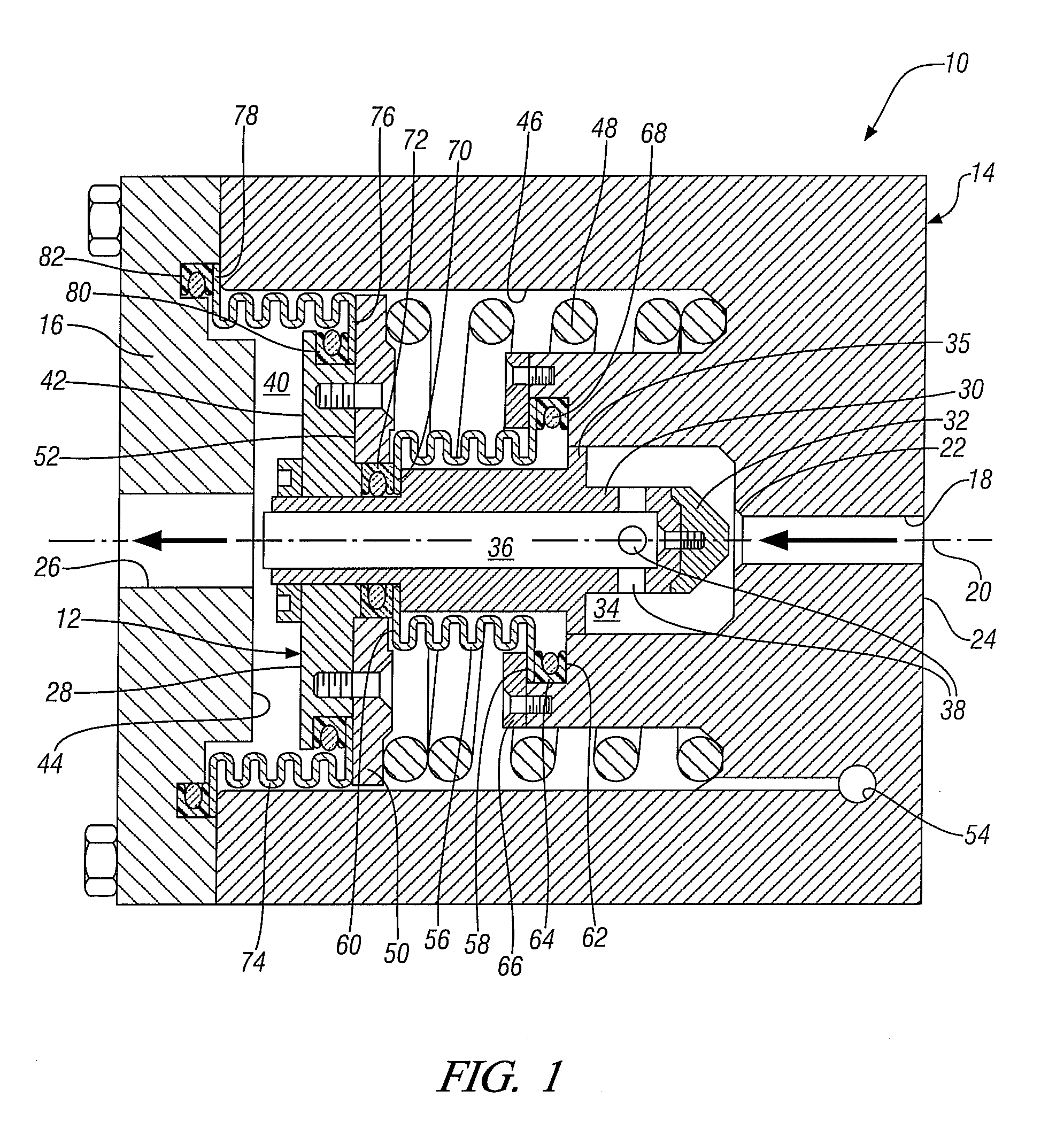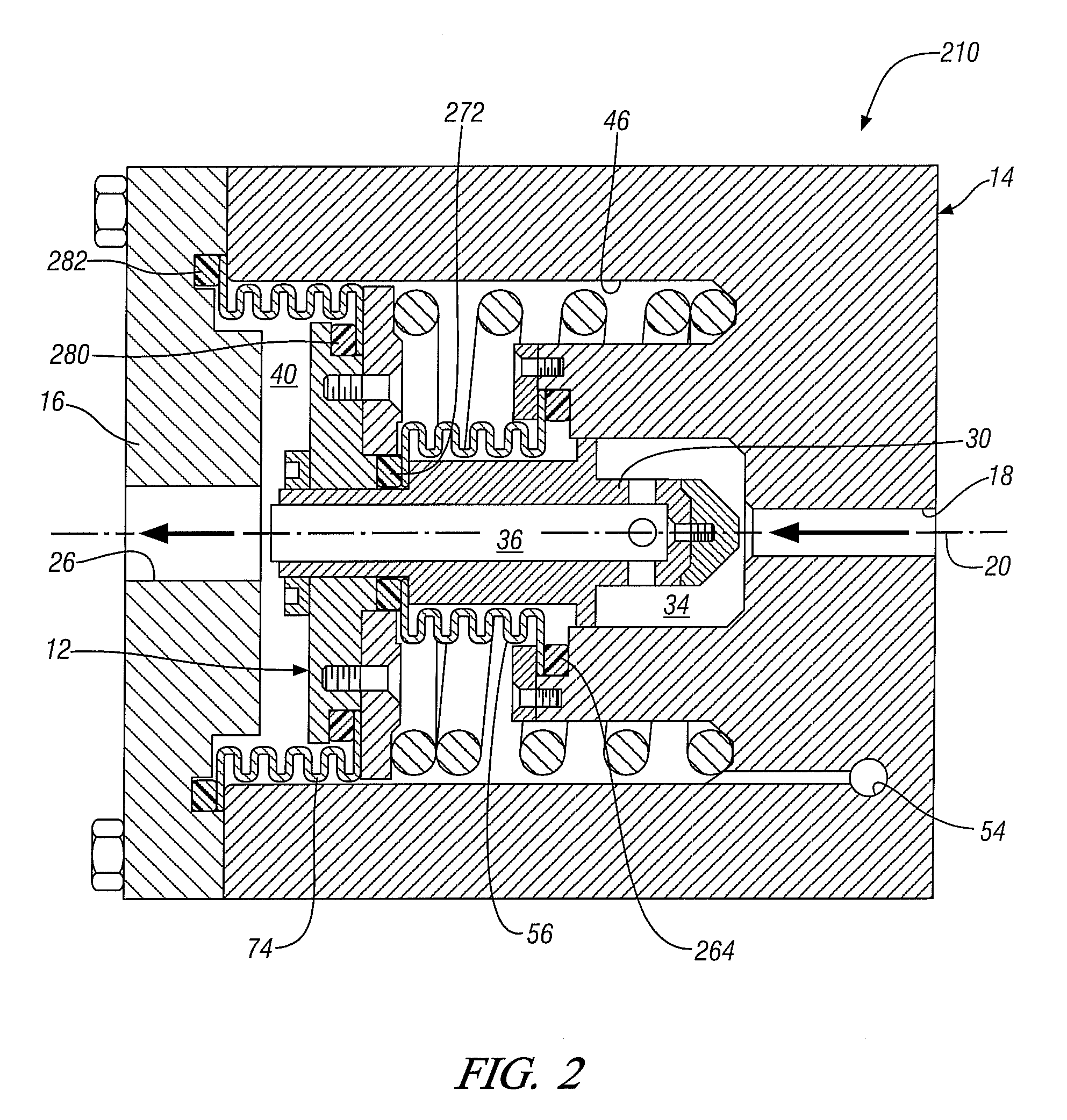Hydrogen supply pressure regulator
a technology of pressure regulator and hydrogen gas, which is applied in the direction of fluid pressure control, process and machine control, instruments, etc., can solve the problems of difficult design flow control and difficulty in controlling hydrogen gas flow, and achieve the effects of preventing hydrogen leakage, low friction, and easy lengthening and shortening
- Summary
- Abstract
- Description
- Claims
- Application Information
AI Technical Summary
Benefits of technology
Problems solved by technology
Method used
Image
Examples
Embodiment Construction
[0024]In accordance with an embodiment of the invention, a pressure regulator described herein provides a regulator body that contains an interior piston assembly to control fluid flow through the regulator, especially hydrogen gas flow. The outlet pressure of the pressure regulator may remain substantially unaffected by variations in the relatively high inlet pressure by relying upon direct outlet pressure feedback to control the fluid pressure. A high pressure chamber is formed on one side of a piston head and a low pressure chamber on the other side. A combination of bellows and seals are used to define the chambers, thus minimizing leakage of hydrogen and facilitating low friction movement of a piston module. The pressure regulator uses a compressive force balance across the piston assembly to maintain the regulator outlet pressure at a predetermined pressure or set point. Examples of some preferred high-pressure regulators are described in the following specification.
[0025]Refe...
PUM
 Login to View More
Login to View More Abstract
Description
Claims
Application Information
 Login to View More
Login to View More - R&D
- Intellectual Property
- Life Sciences
- Materials
- Tech Scout
- Unparalleled Data Quality
- Higher Quality Content
- 60% Fewer Hallucinations
Browse by: Latest US Patents, China's latest patents, Technical Efficacy Thesaurus, Application Domain, Technology Topic, Popular Technical Reports.
© 2025 PatSnap. All rights reserved.Legal|Privacy policy|Modern Slavery Act Transparency Statement|Sitemap|About US| Contact US: help@patsnap.com



